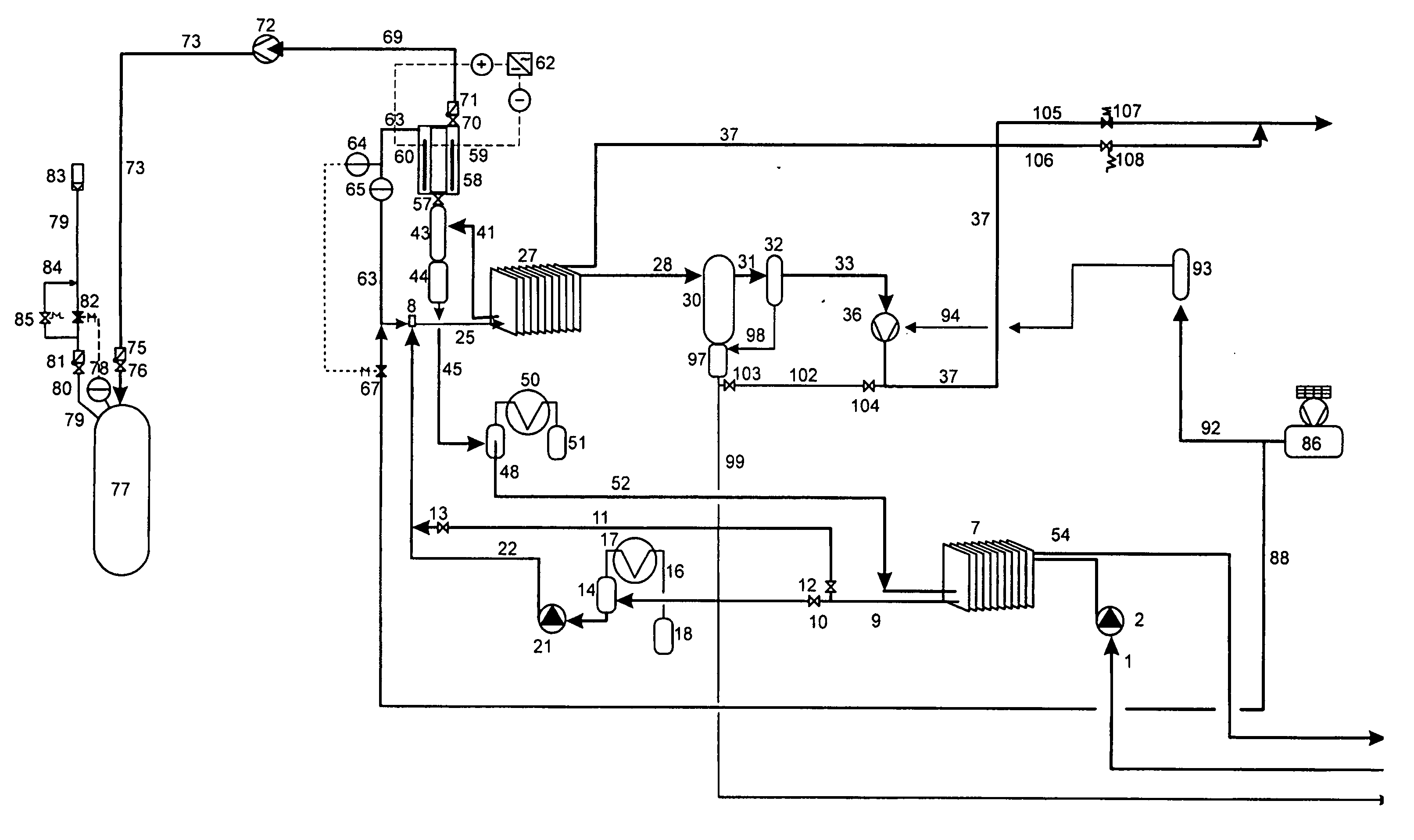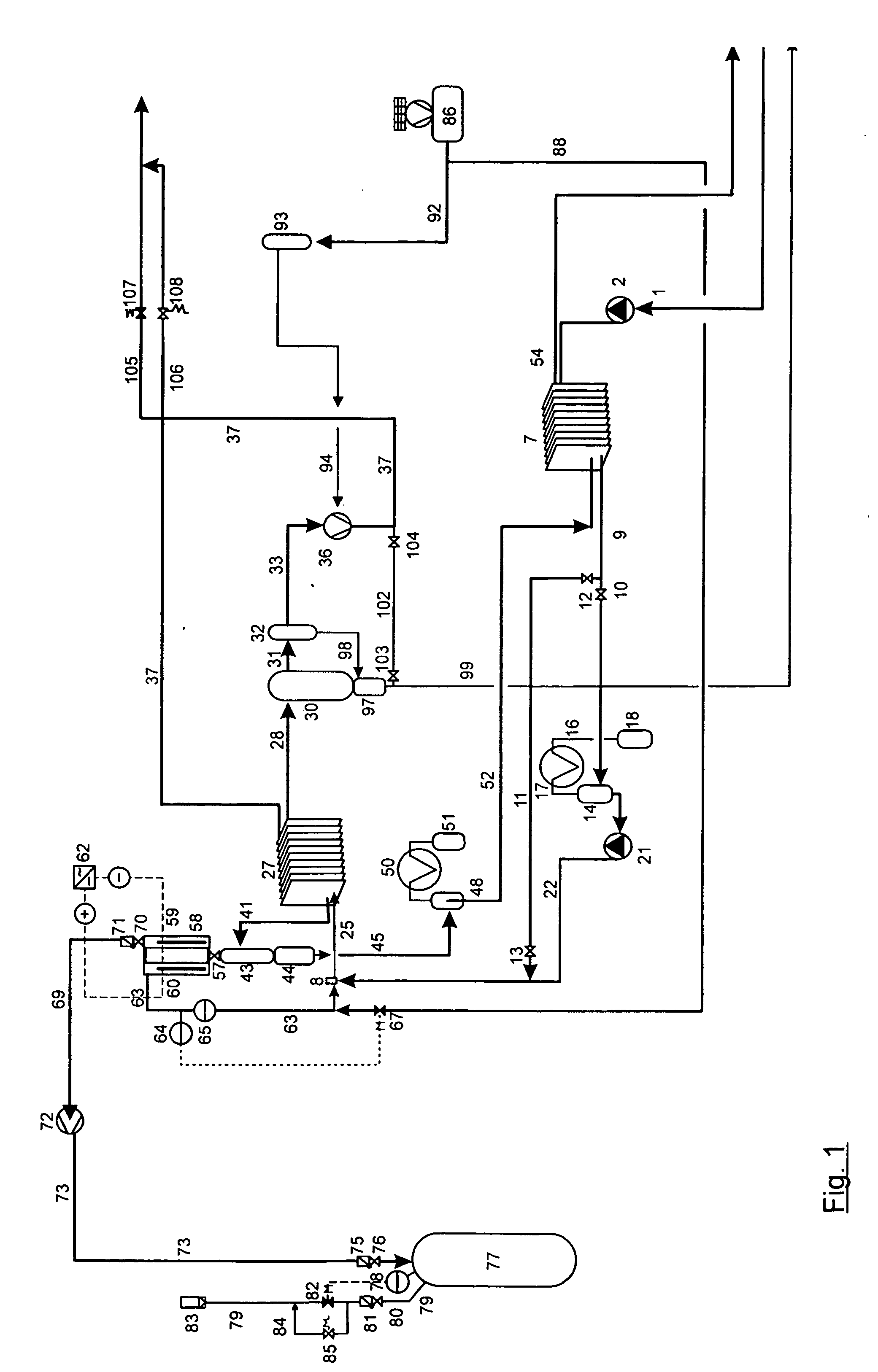Method and device for treating liquids, using an electrolytic stage
a technology of electrolysis and liquid treatment, applied in the direction of water/sludge/sewage treatment, vapor condensation, cells, etc., can solve the problems of reducing the overall efficiency rating of the entire treatment method, reducing the absorption capability to an appreciable degree, etc., to achieve continuous system operation, reduce the loss of carrier gas, and reduce the overall energy consumption
- Summary
- Abstract
- Description
- Claims
- Application Information
AI Technical Summary
Benefits of technology
Problems solved by technology
Method used
Image
Examples
Embodiment Construction
[0047]Referring now in more detail to the drawings, the invention will now be described in more detail.
[0048]Liquids for the invented treatment system, that is, suitable for feed-liquids to the system, include solutions at various dilution strengths, seawater, brackish back water, and the like, all of which are to be treated to become suitable drinking and service waters.
[0049]As can best be seen in the flow diagram of FIG. 1, feed-liquid entry is accomplished by feed inlet 1, wherein a pump 2 supplies the transport energy. The outlet of pump 1 is to an assembly for preheating and precleaning. This assembly comprises a preheat heat exchanger 7 and a separator 14 placed thereafter. Preheat heat exchanger 7 is, in this case, constructed as a condensate treatment liquid heat exchanger, which will be explained in detail later. In preheat heat exchanger 7 the temperature of the feed-liquid, which is dependent upon the thereby attendant pressure, is brought to a level which is as near as ...
PUM
| Property | Measurement | Unit |
|---|---|---|
| Temperature | aaaaa | aaaaa |
| Temperature | aaaaa | aaaaa |
| Pressure | aaaaa | aaaaa |
Abstract
Description
Claims
Application Information
 Login to View More
Login to View More - R&D
- Intellectual Property
- Life Sciences
- Materials
- Tech Scout
- Unparalleled Data Quality
- Higher Quality Content
- 60% Fewer Hallucinations
Browse by: Latest US Patents, China's latest patents, Technical Efficacy Thesaurus, Application Domain, Technology Topic, Popular Technical Reports.
© 2025 PatSnap. All rights reserved.Legal|Privacy policy|Modern Slavery Act Transparency Statement|Sitemap|About US| Contact US: help@patsnap.com



